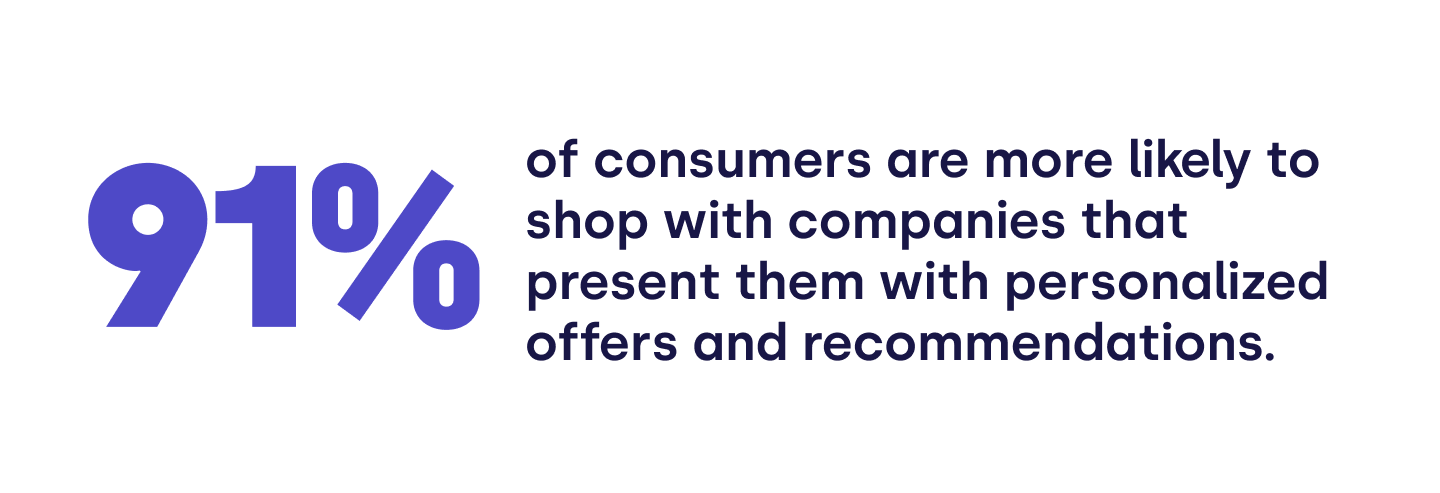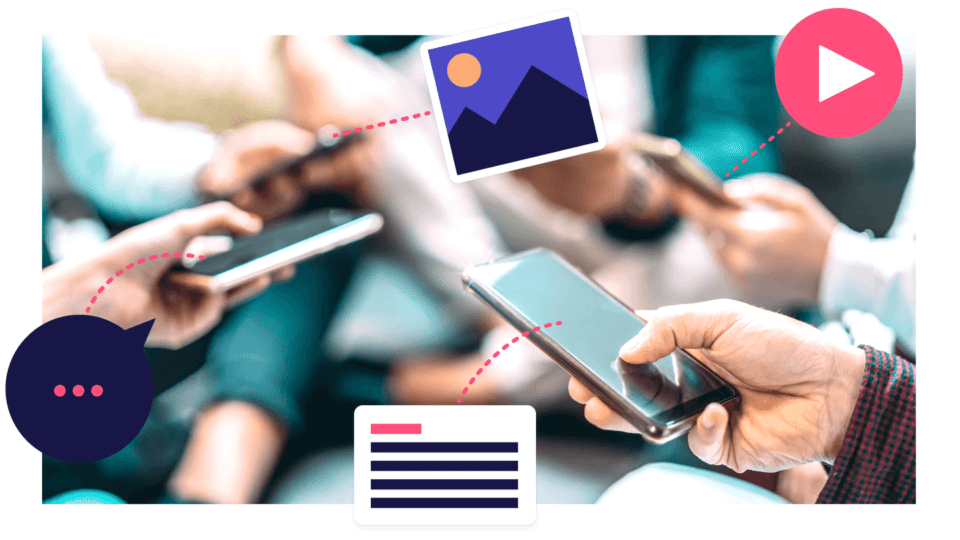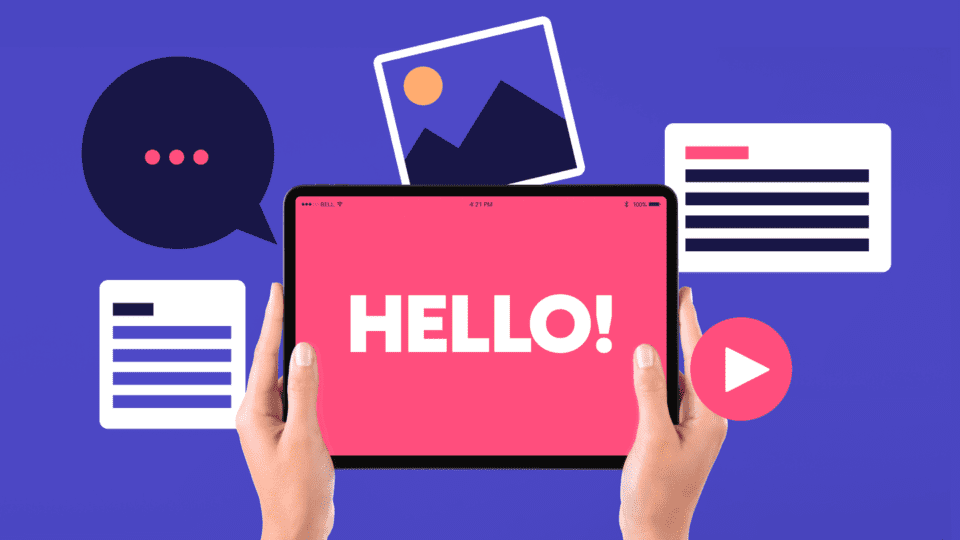What is Content Personalization?

According to Forbes, 91% of consumers are more likely to shop with companies that present them with personalized offers and recommendations. Also, 71% of online shoppers are frustrated when web content doesn’t target their interests. The numbers are clear: personalization is what today’s shoppers want.
However, according to the Nordic State of PR & Communication report, 26 % of industry professionals think the biggest content challenge is creating credible and trustworthy content, and 46 % say the quality of most of the content produced by their organization is poor.
Creating personalized content is not always easy; you need to understand the motivations, questions, and desires that your potential customers have. Only then can you create personalized content that satisfies their needs and proves that your brand is the best option for them.
What is Content Personalization?
First, let’s define the meaning of personalized marketing and personalized content: it is the method of creating content that is unique, relevant, and customized for your target audience. By using data that reveal information like their gender, age, location, and interests, you can deliver targeted and relevant content that increases their likelihood of engaging with your company.
There’s a common misconception that B2B marketers can’t personalize content in the same successful way that B2C marketers can. But don’t be fooled: B2B marketers who personalize their content will see big rewards!
Customization vs. Personalization
Personalization and customization are sometimes wrongfully mixed up. But there is a major difference: customization is something actively done by the user. For example, you have probably visited an e-commerce site at one point and chose to filter or sort something on a results page, like “shoes – sneakers – white – Nike”. That’s customization.
Personalization, on the other hand, happens to the user by a brand. Personalization is based on, like previously mentioned, data about the individual’s geographical or behavioral data, for example. However, customization can be used as a part of a personalization strategy: a customer who always filters items to only be shown products from a specific brand might be shown personalized content specifically about that brand, or similar brands.

Start a 10-day free trial with Mynewsdesk today!
How to get started with Personalized Content
There are different ways to gather information about your audience to use as a foundation when creating personalized content.
One option is to look at your website or social media data. The information available about each visitor ranges from their keyword searches and buying history to information like location, age, and gender.
The increased use of machine learning and artificial intelligence (AI) nowadays has made it easier than ever for brands to gather information about their customers and web visitors. At Mynewsdesk, we use AI in our solution and it enables us to create the best solution on the market. For example, we offer AI in some of our features like “Audience Targeting”, which helps our customers find their most relevant journalists on the platform.
Regardless of where or how you gather your data, it helps paint a picture of each customer’s interests and needs, so you can share the best and most relevant content with them. Here are some tips on how to get started!
Relevance and audience listening
The first step to creating relevant content for your target audience is probably quite obvious: figure out what’s relevant to them.
Make sure that whoever is in charge of the content strategy and writes the content has a regular dialogue with your audience. This can be done by implementing a customer listening program or voice of customers program (VoC) which is a collection of tools and processes that gathers and analyzes customer feedback from customer service, social media, etc, to improve products and services and the overall customer satisfaction.
In addition, or as an alternative, your content team should regularly meet with the CX or CS (customer experience or service). By gaining insights about common questions or feedback, it’s easier to create content that actually provides value.
Different personas
If your company has clearly defined personas or ideal customer types, use those in your brand’s content creation. Update the personas on a regular basis by collaborating with your CX or CS team to gain valuable knowledge about current questions and problems.
Another tip is to print out a picture of the personas and place it on your wall or computer in front of you when creating content. This way, you will be reminded and stay focused on them and their needs.

Customer buying journeys
Tracking your audience’s process through their buying journey is one of the most efficient ways to move them toward the bottom of the funnel, where they make a purchase, and hopefully become long-term, loyal customers. How do you do this? For example, by tracking how your audience behaves on your website, you can personalize the content they see when they revisit your website to match their stage in the journey.
These are the five main stages in a customer’s sales process:
Awareness/introduction of your brand
The growing interest in your products and services
Evaluation of whether your offer fits their needs
Engagement with your team or website
Purchase
Someone who put a product in their cart, but did not proceed to pay, is close and willing to make a purchase. Showing the same content to that person, as you would show to someone who visited your website for the first time, might lower the chances of your desired outcome.
Try one of the most powerful PR Platforms for free!
Post-purchase personalization
The post-purchase phase happens after the first purchase has been made, and before a second purchase or churn (when customers or subscribers stop showing interest in doing business with your company). In this stage, the customers are counting on their purchased product or service to function as expected. This is where they are most critical or impressionable. Use the customer feedback from your CX or CS conversations or your implemented customer listening program, for example, to stay ahead of their feelings, thoughts, or actions. By doing so, you can create content that answers questions, solves problems, or provides inspiration.
This process will not only help you identify gaps in relevant content to create but also result in a timeline for when to present certain types of content depending on your customer’s position in their buying journey.

Examples of Personalized Content
As always, what type of personalized content to create depends fully on your industry, audience, goals, and visions. Here are ten examples of personalized content, followed by three examples:
1. Interactive quizzes
2. Retargeted ads on social media
3. GPS-based map apps
4. Gamification
5. Personalized emails
6. Industry-specific content
7. Segment-specific content
8. Persona-specific content
9. Lead-specific content
10. Intent-specific content
Online pharmacies, dermatologies, or beauty shops are examples of companies that benefit from using quizzes. Online quizzes can substitute the physical consultation that a customer would have gotten by a salesperson in a physical store. Online quizzes can help customers find out their hair type, what facial cream to use for dry skin, or if they have problems that need medical care – this is a great way to ensure they get the help they need and to provide them with personalized offers.
If you use Spotify, you’ve probably noticed some of their famously-known personalized emails or features. Since the company has tons of information about their user’s music preferences they can offer tailored playlists based on previously played songs, or recommend concerts nearby by artists often listened to.
Some broad e-commerce sites with several categories ranging from interior to pet products, and sports gear sometimes offer their first-time visitors the option to fill in their interested area. That way, they can tailor the site based on visitor segments to increase relevance and sales.
Summary
When it comes to digital marketing in 2022, content personalization is definitely something you should either start with or develop. It can be the difference between a potential customer choosing you or choosing your competitor as many customers get frustrated if their online experience doesn’t reflect their interests.
If you want to include media monitoring as a part of your customer listening program, we have a product page about it, where you can also book a demo if you are interested.
If you are intrigued about collaboration across teams, for example, by combining the content team and CX/CS team at your workplace; we have a chapter about it in the State of Nordic PR & Communication report that was released in January. “Converging comms” (collaboration across teams) was one of five main key areas identified when interviewing PR and communication experts on their thoughts about the industry’s development in 2022 and forward.
Mynewsdesk is the market-leading one-stop solution for all your PR and communication needs.